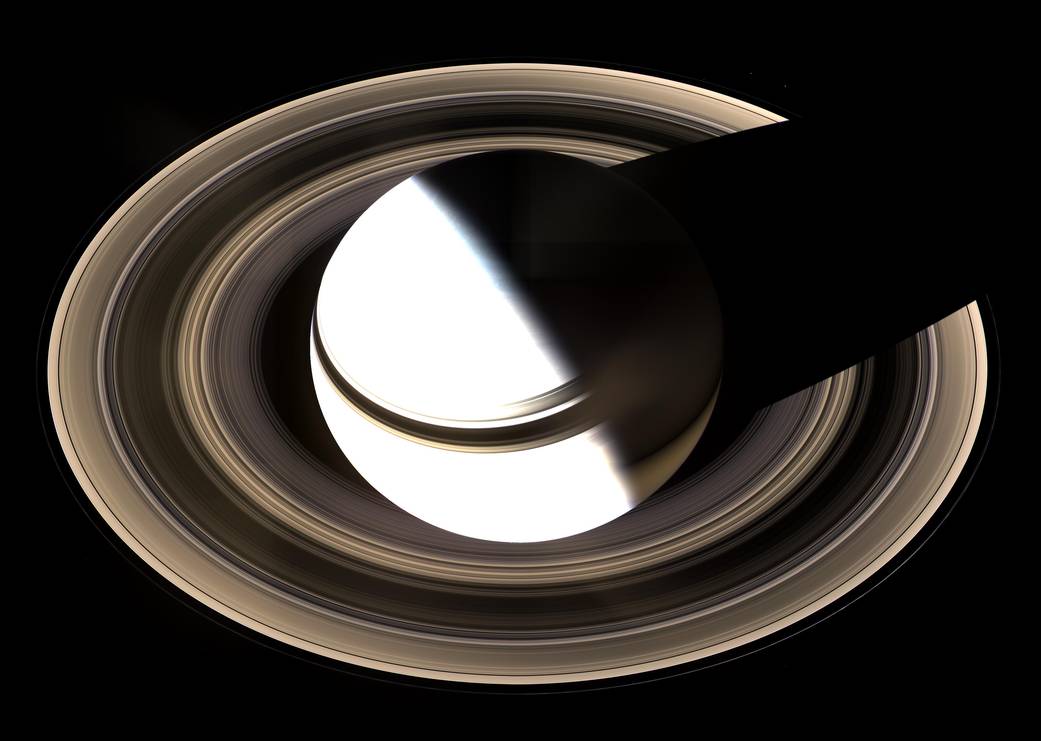On Jan. 19, 2007, the Cassini spacecraft took this view of Saturn and its rings — the visible documentation of a technique called a “pi transfer” completed with a Titan flyby. A pi transfer uses the gravity of Saturn’s largest moon, Titan, to alter the orbit of the Cassini spacecraft so it can gain different perspectives on Saturn and achieve a wide variety of science objectives. During a pi transfer, Cassini flies by Titan at opposite sides of its orbit about Saturn (i.e., Titan’s orbital position differs by pi radians between the two flybys) and uses Titan’s gravity to change its orbital perspective on the ringed planet.
> Read more: 5 Ways NASA Uses Pi
Taking in the rings in their entirety was the focus of this particular imaging sequence. Therefore, the camera exposure times were just right to capture the dark-side of its rings, but longer than that required to properly expose the globe of sunlit Saturn. Consequently, the sunlit half of the planet is overexposed.
The view is a mosaic of 36 images — that is, 12 separate sets of red, green and blue images — taken over the course of about 2.5 hours, as Cassini scanned across the entire main ring system. This view looks toward the unlit side of the rings from about 40 degrees above the ring plane.
The images in this natural-color view were obtained with the Cassini spacecraft wide-angle camera at a distance of approximately 1.23 million kilometers (764,000 miles) from Saturn. Image scale is 70 kilometers (44 miles) per pixel.
Image Credit: NASA/JPL/Space Science Institute





























